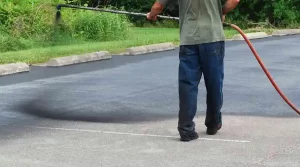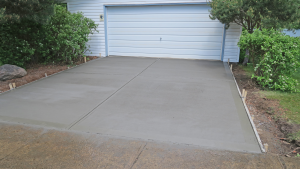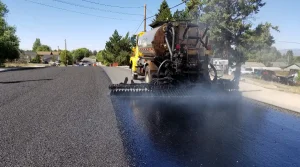Asphalt Heat Distress
During a heat wave, when your pavement is out in the sun for a long time in very high temperatures, it can be damaged by the sun. During the summer, when it’s hot, and especially when the heat lasts for a long time, the sun’s UV rays can fade the color of asphalt and make soft spots, which, if left alone, can lead to potholes. The constant heat beating down on and being absorbed by the asphalt surface can also make it easier to scratch, get scuffed up by cars, and even start to chip away. This heat can also cause cracks, which allow water to get into the lower layers. This causes air gaps to form in the asphalt pavement’s structure, and when pressure from above, like the weight of vehicles and traffic, is put on the top layer, it starts to sag, crumble, and form potholes. It also has a bleaching effect on asphalt, which can cause it to go from being dark black to gray over time.
Heat can cause two common problems with asphalt that you should check for
When asphalt is exposed to heat for a long time, it often gets cracked. Cracking is more common on older surfaces, but it can also happen on new ones that weren’t put together well or aren’t being properly maintained, like not getting a seal coat on them regularly. It usually happens on surfaces that get a lot of regular use, like parking lots and commercial warehouses.
Another thing to look for is oxidation, which weakens the asphalt’s structure and makes the surface crack. The sun’s UV rays cause a chemical reaction in which the light oils combine to make heavier oils. This decreases the number of oils that hold the asphalt together. Cracking and/or raveling happen more often as oxidation goes on.
How not to let heat damage your asphalt
Since sealcoating protects asphalt, reapplying it on a regular schedule can help prevent or lessen heat damage. When the heat is on is a good time to put on sealant because the higher temperatures help the materials stick to the surface. Higher temperatures also make asphalt less viscous, which is a measure of how hard it is to flow. This makes it easier for sealcoating to flow into deeper cracks and crevices, protecting both the surface and the layers underneath.
It’s not too late to fix your asphalt if there are signs of damage. Being proactive and fixing the surface now (rather than later) will make your asphalt last longer and save you the time and money of having to replace it completely.







